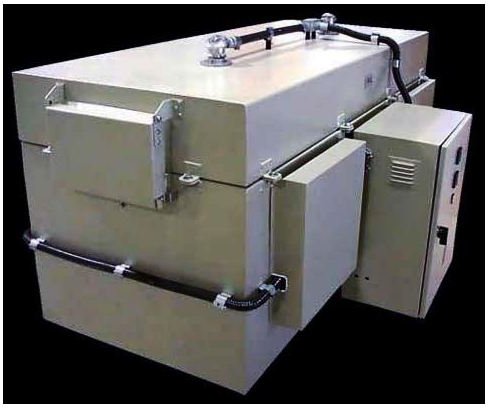What is Cementation? Thermochemical treatments
Thermal x Thermochemical Treatments
The conventional thermal treatment for hardening does not alter the chemical composition of steel, ie, the material starts treatment with 0.4% carbon and it ends with 0.4% carbon. However, sometimes it is necessary to bring the steel to complete modifications on their chemical composition to improve the properties of its surface. These changes are obtained through thermo-chemical treatment.
This treatment aims primarily to increase the hardness and strength of the material wear of the surface and at the same time maintaining the core ductile (soft) and tenacious.
What is Cementation?
The cementation consists in introducing larger quantities of carbon in steel surfaces with low carbon contents. Therefore, it is indicated for mild steel or alloy steel when the original carbon is less than 0.25%. Cementation increases this level up to values around 1%, ensuring hard surfaces and a tougher core.
Parts made of steel with medium or high percentage of carbon that will suffer severe bending operations, tend to crack. However, if they are made with low carbon steel (for example, SAE 1010) and then are shaped and cemented, its possible to have a good result without the pieces run the risk of cracking. The cementation can be performed in solid, gaseous or liquid methods.
Solid Cementation
In this type of cementation, the piece is placed in a steel box containing substances rich in carbon: charcoal, coke, calcium carbonate and linseed oil. Then the piece is brought to the furnace at temperatures around 930 ° C during the time necessary to obtain the desired layer. After that, the piece is submitted to temper to reach hardness.
The residence time in the oven can vary from one to thirty hours and acquired layer varies from 0.3 mm to 2.0 mm.
Gas Cementation
Gas cementation is the most more efficient process because it allows the cementation of pieces with greater consistency and better energy efficiency. This process commonly uses propane gas or natural gas to the generation of needed carbon and the temperature varies from 850 ° C to 950 ° C. After the cementation, the steel is tempered in oil.
Liquid Cementation
In this process molten salts rich in carbon are used, mainly based on the salts of cyanide and carbonate. The temperature has to be 930 ° C to 950 ° C because the salts become liquid at this temperature, with the initial melting around 650 ° C.
Then the pieces are preheated to 400 º C are dipped in molten bath. The role of preheating is to eliminate water and prevent thermal shock. The piece should be cooled in brine with 10 to 15% sodium chloride (ClNa) or in temper oil.
Cementation Today
Currently the process of cement is considered obsolete and is no longer widely used, although it is still used in parts such as axles and cams.
